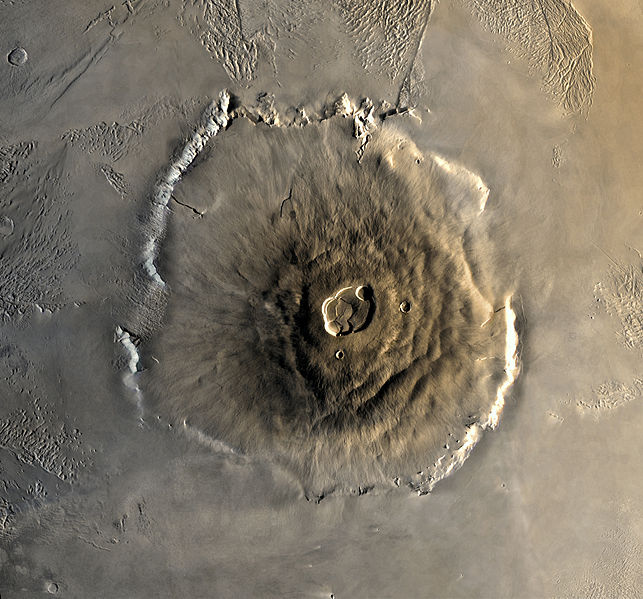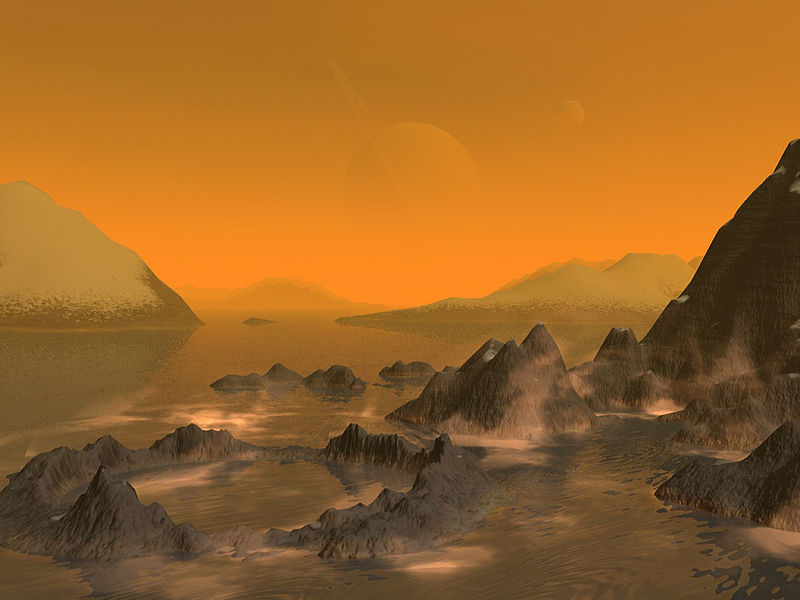How do mountains form in space?
by Ailsa Harvey · 25/09/2019
Everest has nothing on mighty peaks elsewhere in the Solar System…

We marvel at Mount Everest, the highest peak on Earth at 8,848 metres (29,029 feet). Yet in comparison to some of the other mountains found in our Solar System, it’s positively puny. Since its discovery in 1971, Olympus Mons has held the title of tallest mountain in the Solar System. It is a shield volcano located in the western hemisphere of Mars, and has a height of about 22 kilometres (13.7 miles) when measured from base to summit. Olympus Mons looks a lot like the volcanoes that make up Hawaii. It’s asymmetrical, has a low profile and is probably built up from thousands of basaltic lava flows.
In 2011, a mountain on 4 Vesta – an asteroid designated as a minor planet – was named as a potential challenger to Olympus Mons. Since Vesta is one of the largest asteroids in the Solar System, it makes sense that it would have one of the tallest mountains. Thought to be an impact crater, Rheasilvia is the most prominent feature on the rocky body. The central peak in Rheasilvia has also been measured at 22
kilometres (13.7 miles) from its base. First spotted by the Hubble Space Telescope in 1997, the crater was more closely examined by NASA’s Dawn space probe. Given the margin of error for measuring space mountains, Olympus Mons still officially holds the designation of tallest mountain in the Solar System.
The third-highest mountain is one of the most unusual. Found on Iapetus, Saturn’s third-largest natural satellite, it doesn’t even have a name of its own beyond ‘equatorial ridge of Iapetus’. But it is an incredibly dramatic feature, dividing the moon at its equator and giving it a walnut-like appearance. The ridge
contains numerous isolated peaks along its 1,500 kilometres (930 miles), some of them estimated at more than 20,000 metres (65,617 feet). We don’t yet know how the ridge formed or why it’s located along the moon’s equator.

How the mountains form
Large volcanic mountains often form from fluid lava flows, and may be larger than terrestrial volcanoes due to a lack of tectonic plates on the particular body.
These mountains form due to the movement of plates in the crust, caused by compressive forces within the planet or moon.
Large projectiles like asteroids striking a planet or moon can leave more than craters; they can also fault and fracture the surface to create new mountains.
For more science and technology articles, pick up the latest copy of How It Works from all good retailers or from our website now. If you have a tablet or smartphone, you can also download the digital version onto your iOS or Android device. To make sure you never miss an issue of How It Works magazine, subscribe today!





